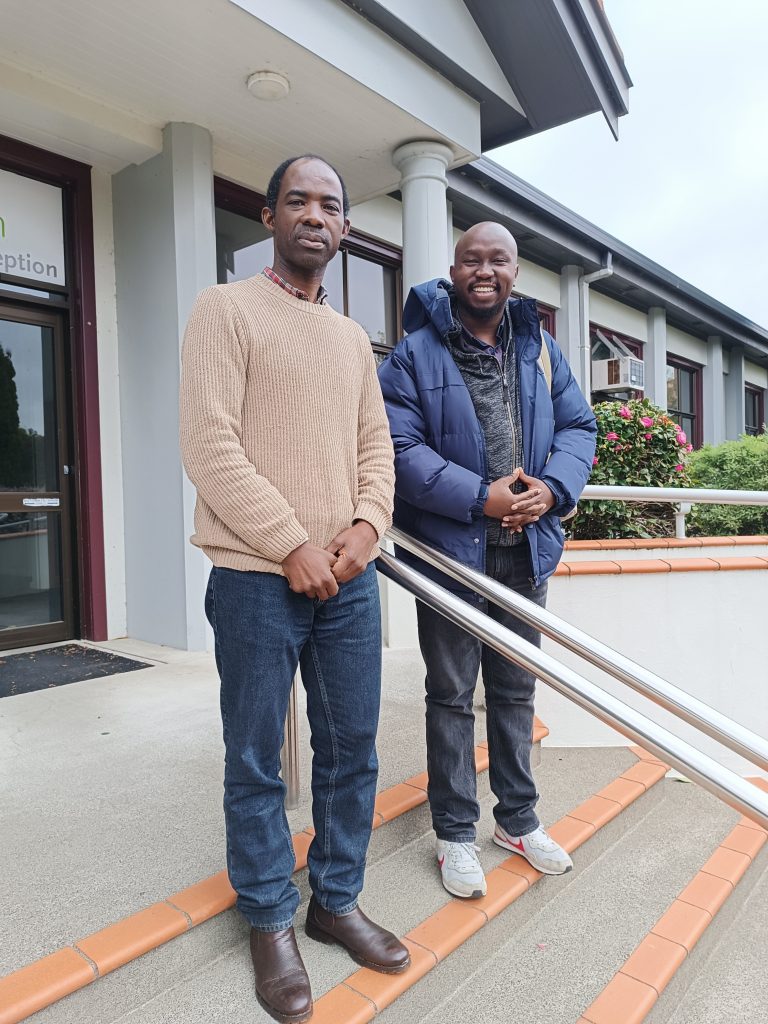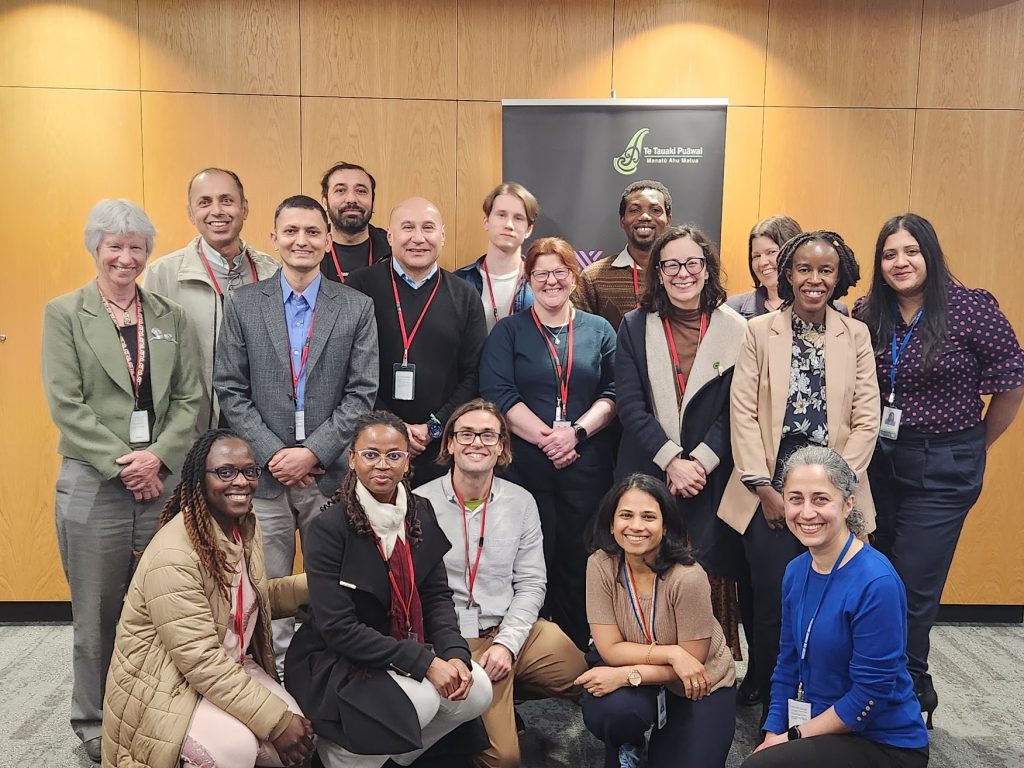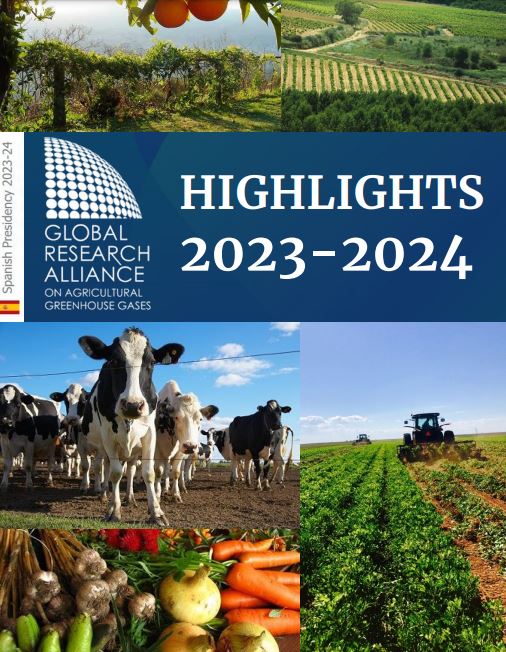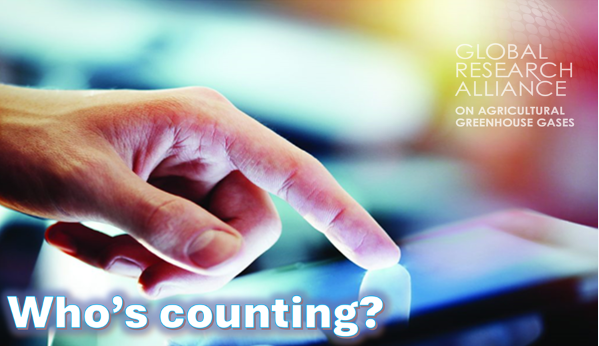Paul Mwangi, PhD student from Kenya, is pioneering research in the field of livestock greenhouse gas emissions. With a solid foundation in veterinary medicine and animal nutrition, Paul is investigating how animal health, specifically gastrointestinal worms, influences enteric methane emissions from sheep—a critical issue for East Africa’s agricultural systems.
Currently, Paul is on a CLIFF-GRADS scholarship, a prestigious program that supports early-career PhD students from developing countries in conducting hands-on research aimed at addressing climate change. During his research stay at Massey University in New Zealand, Paul will collaborate with Dr. Neha Jha on a cutting-edge project to explore how pasture soils can reduce nitrous oxide emissions. This work has the potential to revolutionize livestock farming practices, making them more environmentally sustainable.
The CLIFF-GRADS program, a joint initiative between the Global Research Alliance on Agricultural Greenhouse Gases (GRA) and CGIAR’s Climate Change, Agriculture, and Food Security (CCAFS) program, plays a vital role in equipping young scientists like Paul to conduct innovative research for climate-resilient food systems.
Reflecting on his meeting with Paul, Ackim Mwape, GRA Africa Program Lead, remarked, “Paul’s work exemplifies the power of global collaboration in tackling agricultural sustainability challenges. As his research progresses, I look forward to seeing how his findings contribute to both the scientific community and practical solutions for reducing greenhouse gas emissions in agriculture.”
It’s exciting to witness Paul’s journey unfold, and we are eager to see how his research will shape future efforts in mitigating the climate impacts of agriculture.

Extended to 27 September 2024!

Dear Experts, Dear Colleagues,
The public review of the new FAO LEAP Guidelines on Ecosystem Services Assessment in Livestock Agroecosystems and The Role of Livestock in Circular Bioeconomy Systems has been extended to 27 September 2024!
We would like to ask for your expertise and support for these two key FAO publications.
Ecosystem Services Assessment in Livestock Agroecosystems
The guidelines aim to establish a robust framework for assessing ecosystem services within livestock agroecosystems. They provide stakeholders with clear methodologies for evaluating the benefits and trade-offs of these systems, utilizing biophysical, sociocultural, economic, and modelling approaches.
The Role of Livestock in Circular Bioeconomy Systems
The guidelines aim to provide a comprehensive framework for enhancing circularity within the livestock sector. The document outlines the synergies, trade-offs, and potential interactions of livestock systems within a circular bioeconomy, emphasizing the role of livestock in fostering sustainable practices.
The FAO LEAP Partnership thanks you for your ongoing support and contributions.
We invite you to join us in applying the FAO LEAP Guidelines globally!
On Wednesday, 21 August, eight New Zealand-based scholars from two of the GRA’s scholarship programmes—the New Zealand Global Research Alliance Doctoral Scholarship (NZ-GRADS) and the CLIFF-GRADS programme—came together for the first time at the Annual Science Meeting, showcasing research projects funded by New Zealand’s Ministry for Primary Industries (MPI) in support for the GRA. These scholars, all working on topics related to agricultural greenhouse gas mitigation and measurement, gathered to attend and engage with leading research on agricultural greenhouse gases.
The meeting offered the scholars a unique opportunity to explore key scientific themes such as methane, greenhouse gas inventories, rumen function, nitrous oxide, soil carbon, and GHG mitigation tools. They also witnessed presentations on 21 research projects involving international collaboration.
The research projects were presented by scientists from all around the world including 13 scientists from New Zealand. Key discussions focused on development of GHG measurement technologies/tools, soil carbon, methane, and nitrous oxide emissions. The presentations highlighted the global impact of New Zealand’s support for the GRA, emphasizing the importance of international collaboration, capability development, and the enhancement of global scientific knowledge on agricultural GHG emissions.
The event concluded with a dedicated networking session, where the NZ-GRADS and CLIFF-GRADS scholars presented their own research and connected with one another, as well as with other scientists present. This gathering fostered collaboration and opened up opportunities for future exchanges within the scientific community.

We thank Education New Zealand for organising the participation of our NZ-GRADS scholars.
We have a new report celebrating highlights of the GRA, available to download and share. Check it out HERE or by clicking on the image below.

Please use the link below to register and attend via Zoom. Event organised by the Global Diary Platform in New York.
Meeting Registration – Zoom

The August 2024 issue of Who’s Counting, the Inventories and Nationally Determined Contributions (NDC) Network Newsletter is now available to view HERE.

Who’s Counting summarises scientific progress, opportunities, resources and events related to national agriculture inventory development, national agriculture climate targets, and international inventory capability-building activities.
We encourage you to directly submit content for the next Issue of Who’s Counting.
As part of the Climate Smart Agriculture Initiative, New Zealand and the GRA (in collaboration with Climate Sense) are supporting the General Directorate of Animal Health and Production (GDAHP) of the Ministry of Agriculture, Forestry and Fisheries (MAFF) of Cambodia to strengthen its capacities to respond to climate change.
This is the first systematic assessment of the risks to livestock producers due to climate change. It includes the implications of the trend towards growing commercial production for vulnerability of commercial livestock production. We at the GRA think this is a powerful analysis of climate risks and “low hanging fruit” opportunities for addressing them very efficiently.
- Video produced by Cambodia’s General Directorate of Animal Health and Production (Ministry of Agriculture Forestry and Fisheries)
- Funded by the New Zealand government’s Climate Smart Agriculture Initiative, a contribution to the Global Research Alliance.
- See full report below.
- See more details of the Climate Smart Agriculture Initiative at: https://www.climatesmartagriculture.org.nz
Report
The New Zealand government has been supporting RUFORUM, a network of African universities involved in agriculture in graduate research grants through the Global Research Alliance on Agricultural Greenhouse Gases (GRA). In April 2024, ILRI was visited by Ackim Mwape, a policy and science relationship advisor at New Zealand Greenhouse Gas Research Centre (NZAGRC).
Read more HERE.
The latest issue of the CRG Newsletter is out now!
Click HERE to view online or below to download.

The Ministry for Primary Industries (MPI) of the New Zealand Government has been supporting FONTAGRO on a joint research call through the Global Research Alliance to help in the global effort to cut emissions.
Eight projects were approved as part of the 2024 call, of which four will be co-financed by FONTAGRO and the Ministry for Primary Industries (MPI) of the New Zealand Government, and the other four solely by FONTAGRO.
Read more HERE.
Closing Date: 15 September 2024
Location: St Genès Champanelle
The French National Research Institute for Agriculture, Food, and the Environment (INRAE) is a public research establishment.
You will work in the Dinamic (Digestion, Nutrition, Food, Metabolism, Microbes) team, whose research includes characterising the ruminal microbial ecosystem in order to understand and manipulate methane emissions from ruminants. Ruminant agriculture is currently under intense social pressure for its contribution to global warming. Ruminants are responsible for around a third of anthropogenic methane production, which is linked to microbial activity in the rumen, the first and largest compartment of their digestive system.
For more information click HERE.
